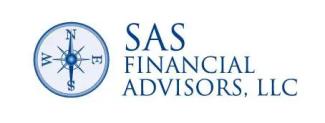A New Year Like No Other
A new year like no other in my lifetime. A long weekend like all the other weekends since the new year, let alone since the middle of March. Light at the end of the dark tunnel should arrive in 2021 assuming the newly installed administration can deliver the vaccine efficiently and to all Americans. Time will tell!
News
Shocked but not surprised. This is the reaction often used by commentators in regard to soon to be former President Trump. The start to the week arrived with the revelation of an audio recording of Trump’s telephone call to the Georgia Secretary of State. Trump can be heard attempting to change the result of a free and fair election - it’s only rigged if Trump loses! And at least two recounts are ‘shocking but not surprising.’ This week Congress counts each state’s electoral votes which have already been certified by each state. 16 days away from inauguration as we begin this post. Mid week we see pro-Trump protestors storm the Capital causing a public spectacle and the Capital goes into lockdown as armed protestors breach entry. It’s been a long week.
Looking back on the Markets in 2020
After a remarkable recovery following the March 2020 bear market, the NASDAQ composite gains over 40% to close out 2020 with double digit gains for other averages. The 2021 New Year started with a decline in all stock market indexes.
Get ready to read about historical annual returns based on first day losses. Analysts generally expect gains in the stock market with possible declines in the first half of the year and a better 2nd half.
This week are the Georgia Senate runoffs that will have an impact on the new administration's relationship with Congress. Although conventional wisdom expects a divided government to be friendlier to Wall Street, that is not necessarily true. Democrats are likely to be more inclined to pass spending bills along with tax increases for corporations and families with taxable income above $400,000.
Stimulus and What’s Ahead?
A couple of interesting articles this week. The WSJ discussed the relief checks questioning that a $2,000 sum sent to 80% of America (paywall link) might not be targeted at those Americans who really need the assistance. Unemployed Americans who might be at risk for eviction or experience a food deficit and frontline low-wage workers are the neediest Americans and aid should be targeted to those who need it most. Average American income declined over the last year.
From Grep Ip in the WSJ: (non-paywall, 3rd party link to otherwise paywall content)
“In fact, aggregate wages and salaries were just 0.4% lower in November than before the pandemic. Thanks to past stimulus, total income was actually 2% higher. It will be 13% higher once the new stimulus kicks in.”Aggregate numbers hide the devastating impact on employment. 20 million Americans are unemployed with more not being counted. Those Americans should be the target of fiscal relief. The impact of increasing supplemental unemployment of $600 similar to the CARES act would not be perfect but more effective than the current relief attempts.
The NYTimes published a column by Neil Irwin titled “Why Markets Boomed in a Year of Human Misery.” Great title. Let’s get right to the point. With 3,000 Americans dying each day of Covid-19 and 800,000 Americans filing unemployment claims each week how can this be reconciled with record setting average gains on Wall Street? Yet another example that he “market” is not the economy, and further explanation on the K shaped recovery. Those who have means are managing, those without means are still in the thick of the struggle. Those who are afforded the ability to work safely from home and have the means to defer income to retirement savings and investments, from a financial standpoint, had a “boom” year.
“Salaries and wages fell less, in the aggregate, than even a careful observer of the economy might think. Total employee compensation was down only 0.5 percent for those nine months, more akin to a mild recession than an economic catastrophe.”Think about who lost jobs and who did not. Those workers who lost jobs were low wage workers and those continuing employment were middle or higher income workers. Though unemployment increased at an unprecedented rate, it was primarily low wage workers. In addition, increased unemployment compensation, $1,200 relief checks and the PPP program injected unprecedented cash into American pockets. At the same time spending declined as savings increased.
“When it’s all tallied up, Americans’ cumulative after-tax personal income was $1.03 trillion higher from March to November of 2020 than in 2019, an increase of more than 8 percent.”Spending shifted from restaurant, travel, and other services to goods. Home improvement, home fitness, cars, home furnishings, etc. but the decrease in spending exceeding the increase in non-durable consumer goods. At the same time interest rates plunged, thanks to the Federal Reserve, mortgage rates and other debt interest rates declined leading to record debt refinancing again positively impacting cash flow.
From the NYTimes again:
“From March through November, personal savings was $1.56 trillion higher than in 2019, a rise of 173 percent. Normally the savings rate bounces around in a narrow range, around 7 percent just before the pandemic. It spiked to 33.7 percent in April, its highest level on record dating back to 1959.”Much of this savings flowed into asset purchases and investments in the stock market. The Federal Reserve certainly played an important role initially in March and April but subsequently the factors mentioned above continued the rally back from lows. Will it continue? Not on the first trading day of the year.

